Past Featured protoscience topics.
The text shown here for each featured topic is as displayed previously on the Main Page. In many cases, the figure legends have been removed for this page. To see the original figure legends, check the history of the Main Page for the date shown.
April 7, 2005 - Cold fusion[]

Cold fusion is a nuclear fusion reaction that may occur well below the temperature required for thermonuclear reactions (millions of degrees Celsius). A type of cold fusion process that is the subject of current research is a poorly understood phenomenon in electrolytic cells in which it has been controversially suggested that the fusion of hydrogen (specifically deuterium) atoms into helium can take place. {original figure caption: Cold fusion reaction} For more information see Cold fusion.
April 8 - Memetics[]

Memetics is a forming interdisciplinary science that attempts to unite certain aspects of behavioral biology and sociology. Memes are cultural elements such as beliefs that can be passed from one person to another. Genes are the units of genetic inheritance, and by analogy, memes are the units of cultural inheritance. Memetics provides a good example of a new science that is slow to be accepted by many social scientists who object to the idea that certain biological methods and concepts might invade the study of human culture. {original figure caption: Chimps, like humans, have cultural elements that are passed between individuals as memes.} For more information see Memetics.
April 9 - Brane cosmology[]
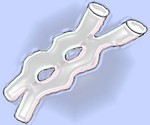
In string theory, some particles can be represented as one dimensional strings that form loops, move through space, interact with eachother and with other higher dimensional objects called banes. A string is a 1-bane. In Brane cosmology, attempts are made to formulate mathematical models in which physical constraints on the fundamental components of the universe (branes) account for the largest scale comological properties of the universe. Brane cosmology raises the question: can a mathematical model with no confirmation by experiment be scientific? {original figure caption: Two interacting 1-branes.} For more information see Brane cosmology.
April 10 - Ufology[]

Apollo 16 UFO video.
Ufology has been practiced by some respected mainstream scientists like Carl Sagan. UFO reports are as worthy of study as any topic, and deserve case-by-case analysis using the scientific method. Study of UFO sightings this way has yielded very interesting and important results, although generally about weather phenomena, secret military flight programs and human perception, not aliens from space visiting Earth. Most critics consider ufology at worst a pseudoscience, or at best a protoscience. If space aliens are here, would we know how to look for them? For more information see UFOlogy.
April 11 - Alchemy[]

Alchemy was a protoscientific practice combining elements of chemistry, physics, astrology, metallurgy, and medicine. Alchemists struggled to achieve the transmutation of common substances into either gold or silver. They also tried to discover a remedy that would cure all diseases and prolong life indefinitely. The philosopher's stone was the key in these goals. This mythical substance, which could just as well be powder or liquid as a stone, had the ability to do both. Alchemy can be regarded as the precursor of the modern science of chemistry prior to the formulation of the scientific method and discovery of the atomic nature of material substances. {original image caption: The Alchemist by Leon Brunin.} For more information see Alchemy.
April 12 - Astrobiology[]

Terrestrial Planet Finder.
Astrobiology is an idea in search of data. Many scientists expect that life is common, probably having come into existence on millions of planets. However, astrobiology is a speculative field within biology; nobody has evidence for extraterrestrial life. Astrobiology includes the concept of artificial life, since any life form with human-like intelligence could conceivably create artificial life in a laboratory. Such artificial life might be more suitable than a biological organism for interstellar travel. While currently funded efforts in astrobiology focus on planetary exploration and attempts to detect planets with Earth-like atmospheres, it has been suggested that we should also look closely at Earth for signs that alien artificial life is already here. For more information see Astrobiology.
April 13 - Science of the Soul[]

The Science of the Soul should be fundamentally multidisciplinary and it would be desirable to invite many others from outside to share their perspectives and join in the development of this wiki resource. Since science as a human enterprise and investigation of the soul have often diverged, it will be important restrict material at this wiki to efforts that have a real connection to science. Much of the material in this wiki-based exploration of the soul is speculative, but the wiki's rules for article style force participants to try to frame all discussion in the language of science. Speculations about the nature of the soul will need to be expressed in terms of hypotheses and the goal of finding objective methods to test those hypotheses. We can start with personal human experiences as relevant data, but our aim is to strive for scientific objectivity. {original caption: Can there be a scientific account of the human soul?} For more information see Science of the soul.
April 14 - Quantum consciousness[]
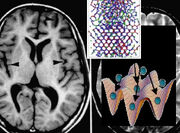
Most neurobiologists (example) have suspected that consciousness is generated by neuronal networks in the brain and will be understood in terms of neuronal activity, not quantum physics. In contrast, Quantum consciousness theories suggets that consciousness can control events at the quantum level and that quantum events are fundamental to consciousness. Several physicists have suggested that it will be possible to formulate a new view of quantum physics so as to provide an understanding of conscious experience and free will. There are several types of Quantum consciousness theories. Microtubule Theories are based on the idea that consciousness might control quantum events at the level of microtubules inside brain cells. {original caption: Does consciousness control the 'collapse' of the quantum mechanical wave function?} For more information see Quantum consciousness.
April 15 - Parapsychology[]

Can a brain form functioning connections to other brains?
Parapsychology is the study of the evidence involving phenomena where a person seems to affect or gain information about something through a means not currently explainable within the framework of mainstream, conventional science. Proponents of the existence of these phenomena usually consider them to be a product of unexplained mental abilities. An alternative, more critical view, suggests that it is natural for people to imagine unusual mental abilities like telepathy, but they do not actually exist. One current area of investigation concerns the possible use of machines to either detect psychic phenomena or amplify them. For more information see Parapsychology.
April 16 - Transhumanism[]

Transhumanism objective: immortality
Transhumanism is a philosophical movement built upon the idea that science and new technologies can be applied to produce radically transformed human descendants. One typical objective of many transhumanists is life span extension. It has been suggested that nanotechnology will eventually allow for cell-by-cell repair of aging organisms, allowing for essentially immortal human descendants. Some transhumanists are more interested in creating artificial life forms. It has been suggested that some artificial life forms could serve as human descendants because human minds could be "downloaded" into the brains of artificial life forms. It has not yet been possible to repair aging organisms with nanotechnology and mind transfer is still only speculative. For more information see Transhumanism.
April 17 - Evolutionary psychology[]

Evolutionary psychology is based on the idea that animal (including human) behavior is contrained by genetic predispositions. These behavioral tendencies evolved by natural selection. Evolutionary psychologists seek to understand human behavior by understanding the survival-conferring functions that our behavioral predispositions might have served in the past. For example, not all animals have color vision. We can seek to understand the important role that color vision has in human behavior in terms of an evolutionary past in which it was important for survival that our ancestors had good color vision. A serious limitation on evolutionary psychology is that its practitioners tend to construct hypothetical accounts of the origins of human behavioral predispositions without having a way of verifying those accounts. {original caption: Did Darwin's critics instinctively know how to ridicule an opponent?} For more information see Evolutionary psychology.
April 18 - Alternative medicine[]

There are many traditional or new age medical systems and therapies that are not a part of conventional Western medical practice. Some of these have only recently started to have government sponsored research funding, so objective evidence is now starting to accumulate from which it will be possible to make scientific evaluations of the efficacy and safety of Alternative Medicine methods. Research on acupuncture has shown that some patients can benefit for certain types of pain relief. Meditation has been used as therapy for some medical conditions, but controlled studies of efficacy have been few and far between. Yoga may provide medically beneficial effects for some patients and some clinical trials are being conducted. {original caption: Some plants have medicinal uses.} For more information see Alternative medicine.
April 25 - Cryonics[]
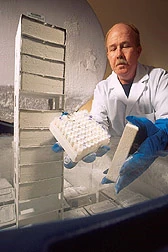
Cryonics is the practice of preserving organisms, or at least their brains, for possible future revival after storage at cryogenic temperatures (below liquid nitrogen temperature; -320ºF, -196ºC, 77 Kelvin). An organism held at cryogenic temperatures is said to be cryopreserved. Substances such as dimethylsulfoxide and glycerol are used in cryobiology as cryoprotectants for storage of isolated cells at liquid nitrogen temperature. With care, a high percentage of cryopreserved cells are viable upon thawing. However, cryopreservatives such as glycerol have not been successfully used for storage of organs and entire organisms. Research continues in an attempt to discover cryoprotectants which may one day allow for storage of whole human organs at liquid nitrogen temperature. Some speculation suggests that advanced nanotechnology may be required in order to make possible the repair of cells that have been damaged during tissue storage at cryogenic temperatures. The fact that nobody has a workable technolgy for cryonics means that most scientists classify this as a protoscience in search of technical methods that would allow true scientific process. {original caption: Human cells can be stored in liquid nitrogen} For more information see Cryonics.
May 1 - Cryptozoology[]
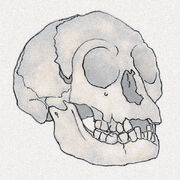
Cryptozoology is the attempt to study rumored animals such as Big Foot and the Loch Ness Monster. The prospects for conversion of this protoscientific field into a mature science seem limited because every time evidence for a rumored animal is obtained, the study of that animal automatically falls into the domain of zoology proper. For example, giant squids were once only rumored but now samples have been collected and the rumors verified. The radical fringes of cryptozoology are often considered pseudoscience by mainstream biologists. Many cultures have rumors of "Little people". The recent discovery of fossils of Homo floresiensis has been suggested to indicate that human cultures may have preserved a record of interactions with small humans from thousands of years ago. {original caption: Physical evidence for "Little people"?} For more information see Cryptozoology.
May 8 - Intelligent design[]

Creation mythology.
Intelligent design is a controversial set of arguments which assert that empirical evidence supports the conclusion that life on Earth was deliberately designed by one or more intelligent agents.
Intelligent design advocates argue that the standard scientific model of evolution by natural selection is insufficient to explain the origin, complexity, and diversity of life. More specifically, Intelligent design adherents believe that there exist instances of irreducible complexity, which in their view are impossible to evolve and therefore must have been created by an intelligent designer.
The creation of life is just one aspect of the general idea that there are things that cannot just happen and that must occur by the intervention of mind. In his book Contact, Carl Sagan explored the kind of objective evidence that would be needed in order to support the idea that the universe had been created. Sagan suggested that a creator of the universe might have "signed his work" by building a coded message into the physical laws of the universe. Would finding such a code turn Intelligent design into a true science? For more information see Intelligent design.
June 5 - Astrosociobiology[]
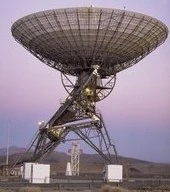
Goldstone radio telescope.
Astrosociobiology is the speculative scientific study of extraterrestrial civilizations and their possible social characteristics and developmental tendencies. The field involves the convergence of astrobiology, sociology and evolutionary biology. Thus far, it is entirely theoretical.
If Astrosociobiology is going to become a serious science, means need to be found to make contact with extraterrestrial civilizations. So far, the major approach to detecting or possibly communicating with extraterrestrial civilizations is the use of radio telescopes to detect electromagnetic signals from outer space (SETI).
Most SETI efforts assume that advanced extraterrestrial civilizations might attempt to send powerful radio signals into space that a relatively primitive technological society (such as our own) might be able to detect. However, it may be that the "Radio Age" is very short for most civilizations, and few radio signals may exist in our galaxy. Also, it may be that advanced extraterrestrial civilizations attempt to hide from primitive cultures, in order to prevent contaminating them or otherwise interfering with their natural course of development. If so, new means of detecting extraterrestrial civilizations may be needed. For more information see Astrosociobiology.
July 5 - Astrology[]

Astrologers in many cultures have made use of a Zodiac; a chart of contellations used to subdivide the year. This image shows a Zodiac at the Temple of Denderah.
Astrology involves the attempt to use knowledge of the positions of celestial bodies in order to understanding human existence on Earth. Today, astrology is often classified as a pseudoscience because conventional sciences such as astronomy and biology have not found objective evidence for causal links between the positions of distant astronomical objects and human behavior. Astrologers attempt to correlate the positions of celestial bodies at the time of the birth with people's personality traits, important events in their lives, or even physical characteristics.
There are some astrologers who try to put astrology on sound scientific grounds, and so some elements of the astrological community can be viewed as a protoscience. This was much more common in the past, before astronomy became an established science. Many early astronomers such as Tycho Brahe were interested in attempts to justify astrology in scientific terms. For more information see Astrology.
August 3 - Artificial Consciousness[]

The original face of artificial consciousness, Max Headroom.
Artificial consciousness is a subset of artificial intelligence research, specifically concerned with the goal of producing man-made devices with consciousness. Gerald Edelman's theory of biological consciousness emphasized the dependence of consciousness on memory. If Edelman's theory is correct, then artificial consciousness should be possible if artificial intelligence researchers can replicate in electronic circuits those kinds of memory systems that exist in human brains.
Some philosophers question the possibility of verifying that anyone or anything besides yourself is conscious. It may be possible to use nanotechnology or brain scanning techniques to gain at least partial access to the contents of consciousness in another person or man-made device. This might make it possible to partially share consciousness between two conscious individuals.
August 26 - Alternative physics[]

Does light need a medium?
The term Alternative physics is used to refer to many physical theories that fall outside of mainstream physics. There are many websites that claim conventional physics has adopted eroneous theories and excluded correct views of physics from the mainstream. There are many "alternative physicists" who feel that conventional science is wrong to reject the idea of an aether. For example, the "General Lorentz Ether" theory of Ilja Schmelzer is described as an "ether theory of gravity" that makes predictions similar to those of general relativity. It is claimed that "General Lorentz Ether" is a replacement theory for an earlier theory that was reviewed on the internet and shown to have defects. Can an important result in physics be produced from such an alternate physics research track?
See also[]
- Featured Protoscience - Make plans for future featured protosciences.
- Currently featured protoscience